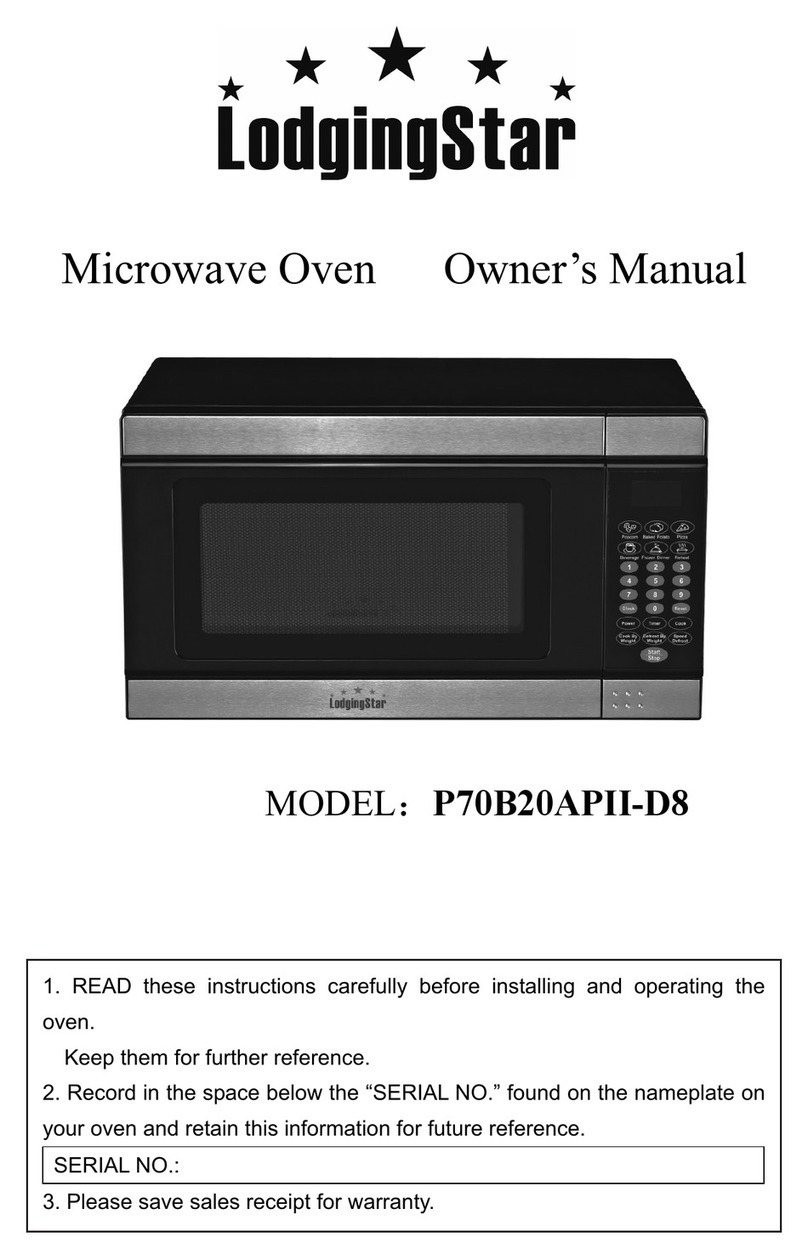
3
After heating, allow the container to
stand in the microwave oven for a short
time before removing the container.
Use extreme care when inserting a
spoon or other utensil into the container.
10. Do not heat oil or fat for deep-frying. It is
difficult to control the temperature of oil in
microwave oven.
11. Pierce foods with heavy skins such as
potatoes, whole squash, apples and
chestnuts before cooking.
12. The contents of feeding bottles and baby
jars should be stirred or shaken and the
temperature should be checked before
serving in order to avoid burns.
13. Cooking utensils may become hot
because of heat transferred from the
heated food. Potholders may be needed
to handle the utensil.
14. Do not cover or block any openings on
the appliance.
15. Do not store or use this appliance
outdoors. Do not use this product near
water, for example, near a kitchen sink, in
a wet basement, near a swimming pool,
or similar locations.
16. Do not operate this appliance if it has a
damaged cord or a plug, if it is not
working properly or if it has been
damaged or dropped.
17. Do not immerse cord or plug in water.
Keep cord away from heated surface. Do
not let cord hang over edge of table or
counter.
18. Use only thermometers, which are
specifically designed for use in
microwave ovens.
19. Do not operate any heating or cooking
appliance beneath this appliance.
20. Be certain the glass tray and roller rings
are in place when you operate the oven
21. This appliance should be serviced only by
qualified service personnel contact
nearest authorized service facility for
examination, repair, or adjustment.
22. When cleaning surfaces of door and
oven that comes together on closing the
door, use only mild, nonabrasive soaps,
or detergents applied with a sponge or
soft cloth.
SAVE THESE INSTRUCTIONS




























